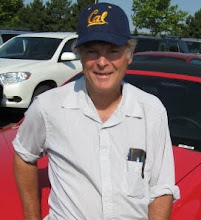Author of Sharene:
Death: A Prerequisite For Life
A Brief Biography of Ho Chi Minh
Like those for most of us, a biography of Ho Chi Minh (1890-1969) can begin with his family of origin that, in Central Vietnam, strongly opposed French rule in his native country.
His father refused to learn the French language, lost his job as a teacher in French schools, and became an itinerant servant to Vietnamese peasants, primarily writing letters for them and providing medical services. A sister joined the French army and began a campaign of stealing guns in hopes of arming a revolution against the French. However, she got caught and was sentenced to life in prison.
Key dates in the life of Ho Chi Minh include:
* 1917 In Paris, Reads works of Karl Marx
* 1920 In Paris, Plays key role in origins of French Communist Party
* About 1923 Summoned to Moscow for training
* 1924 Moves to China side of Chinese-Vietnam border, forms revolutionary group of Vietnamese exiles
1930 Founded Indochinese Communist Party
1931-1933, Imprisoned by British in Hong Kong
1941 Formed Vietminh which, with U.S. as ally, fought Japanese in Vietnamese jungles
1945 Declares formation of Democratic Republic of Vietnam for a united Vietnam; but WW II victorious countries award northern half of Vietnam to China, southern half to Great Britain
1946 France negotiates to regain control of Vietnam
1954 Vietminh, after eight years of war, drive French from Vietnam; world leaders in Geneva split Vietnam at 17th parallel, giving north half to Communists under Ho’s rule, south half to anti-communist government
1960 Ho forms National Front for the Liberation of South Vietnam, aka Vietcong, and launches guerilla warfare tactics
1965 First U.S. combat troops arrive in Vietnam
1969 Death of Ho Chi Minh, heart attack
1975 North Vietnamese conquer South Vietnam, rename Saigon, South Vietnam’s capital, Ho Chi Minh City.
Educated in French schools in Vietnam, Ho sailed to France and, in 1919, tried to approach U.S. President Woodrow Wilson carrying written list of abuses he claimed the French had committed against Vietnam. Unable to make that contact, he became a member, if not a founder of the French Communist Party.
After his training in Moscow, Ho reportedly became a covert agent often disguised as a Chinese journalist or Buddhist monk. During those years before his return to Vietnam in 1941, Ho is said to have used many aliases, been reported dead many times, and, throughout it all, fought an ongoing battle with tuberculosis.
Ho was so popular in Vietnam that U.S. President Dwight Eisenhower wrote in the 1950s that Communist Ho Chi Minh possibly would collect 80 percent of the vote were an all-Vietnam popular vote held.
Pulitzer Prize winner Stanley Karnow once wrote of the Vietnamese leader’s character, “There was no flexibility in Ho’s beliefs, no bending in his will.”
Any biography of Ho Chi Minh, whether short or long, likely will lack answers to many questions, for the man was both complex and, because of his chosen vocation, secretive.





